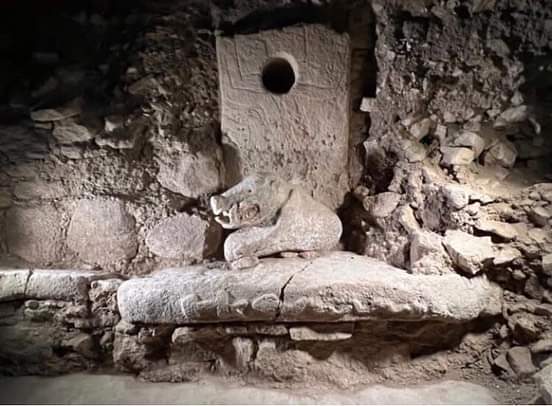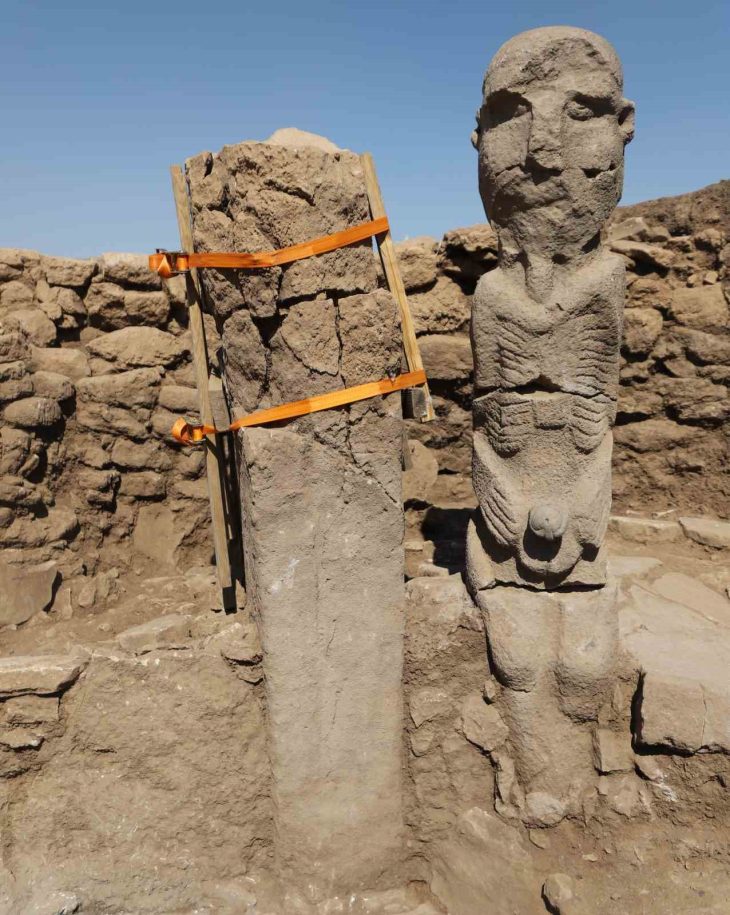Göbeklitepe, the 12,000-year-old megalithic wonder often referred to as the “zero point of history,” continues to astonish archaeologists with groundbreaking discoveries. Recent excavations at this UNESCO World Heritage site and its neighboring “sister site,” Karahantepe, have unearthed a trove of remarkable artifacts, including a painted wild boar statue and a life-sized human figure – both unparalleled finds from this era.

The Göbeklitepe excavation, part of the Taş Tepeler Project that’s revolutionizing our understanding of prehistory, yielded a unique discovery – a life-sized wild boar statue crafted from limestone. This remarkable artifact stands out not just for its size but also for the vibrant pigments adorning its surface – red, white, and black. Significantly, this is the first-ever painted sculpture dating back to this period.

Göbeklitepe’s ongoing revelations extend beyond the painted boar. The Ministry of Culture and Tourism of Türkiye has announced the discovery of a human statue in Karahantepe. Standing at an impressive 2.3 meters tall, this figure is particularly noteworthy for its lifelike facial expression, a rare find in prehistoric art. Furthermore, the statue exhibits a distinct posture, seated and with emphasized ribs, spine, and shoulder bones, possibly depicting a deceased individual.
Intriguingly, parallels can be drawn between this newly discovered statue and a relief unearthed in Sayburç in 2021. Both depict figures holding their phallus, though the Karahantepe statue showcases a unique detail – the use of both hands. Thematic similarities between these finds hint at potential cultural or symbolic significance.
The Karahantepe excavations haven’t stopped at the human statue. Archaeologists also uncovered a vulture sculpture adorning a wall and stone plates on the ground within the vicinity of the human figure. These additional finds add further context to the unearthed human statue, offering glimpses into the artistic and symbolic expressions of this bygone era.

The Taş Tepeler Project, encompassing Göbeklitepe, Karahantepe, and neighboring regions, has emerged as a significant area of archaeological interest. Spanning over 200 kilometers, this region, aptly named “Stone Hills” in English, harbors the earliest known established settlements in Anatolia and Upper Mesopotamia. Recent discoveries in Şanlıurfa province, where both Göbeklitepe and Karahantepe are located, point towards a distinct phase within the Pre-Pottery Neolithic period.
The ongoing exploration of Göbeklitepe and Karahantepe promises to unveil even more secrets about the lives, cultures, and artistic expressions of our distant ancestors. These remarkable finds challenge our understanding of the Pre-Pottery Neolithic period, showcasing a level of artistic sophistication and symbolic representation previously unseen. As excavations continue, we can expect the “Stone Hills” to continue whispering tales from the depths of time.
